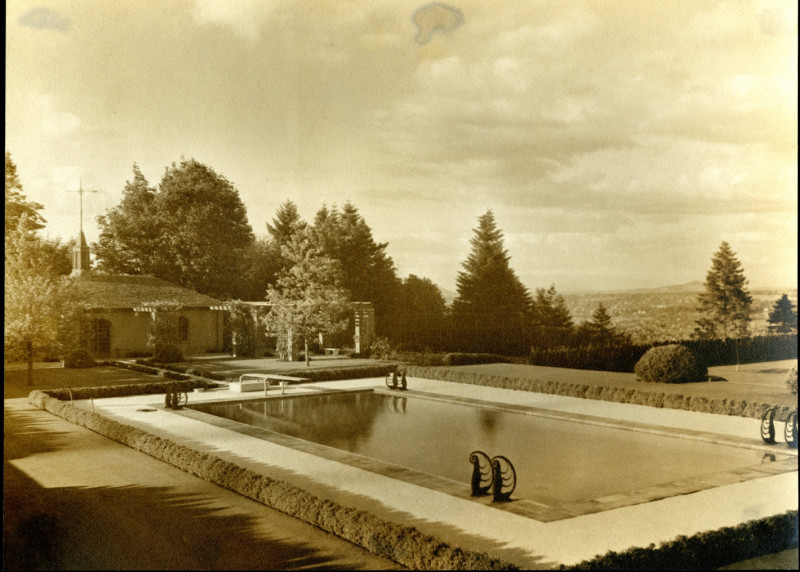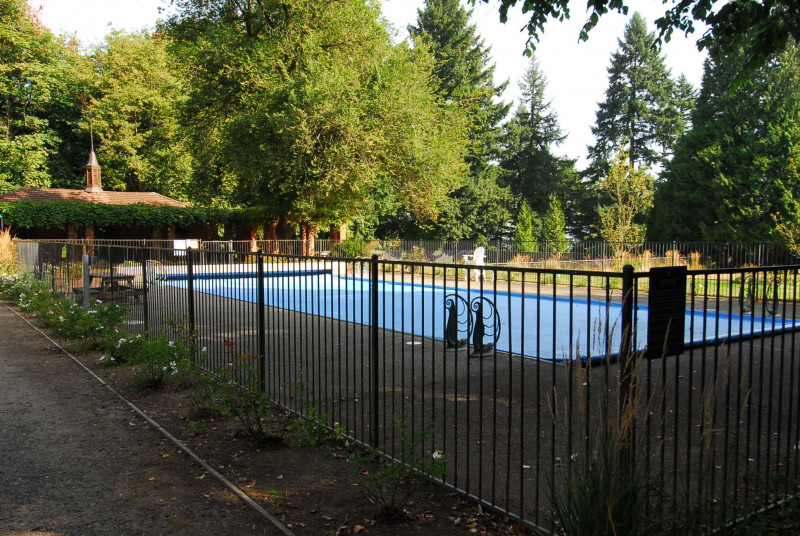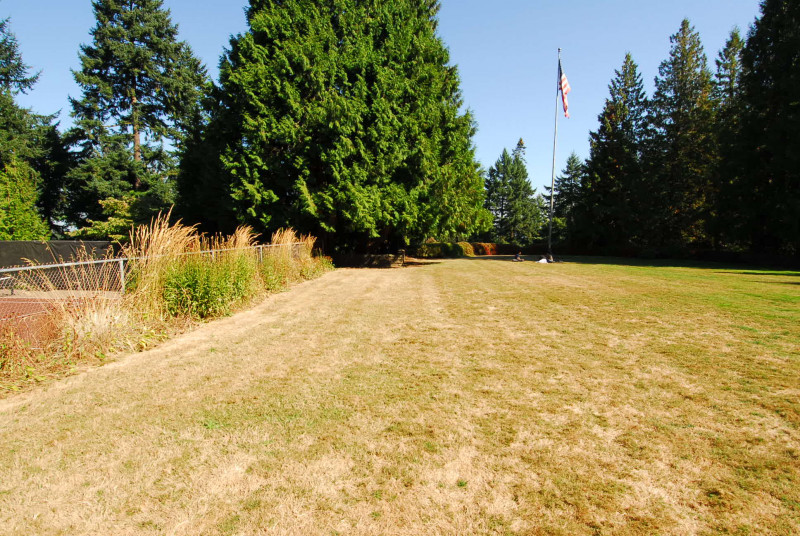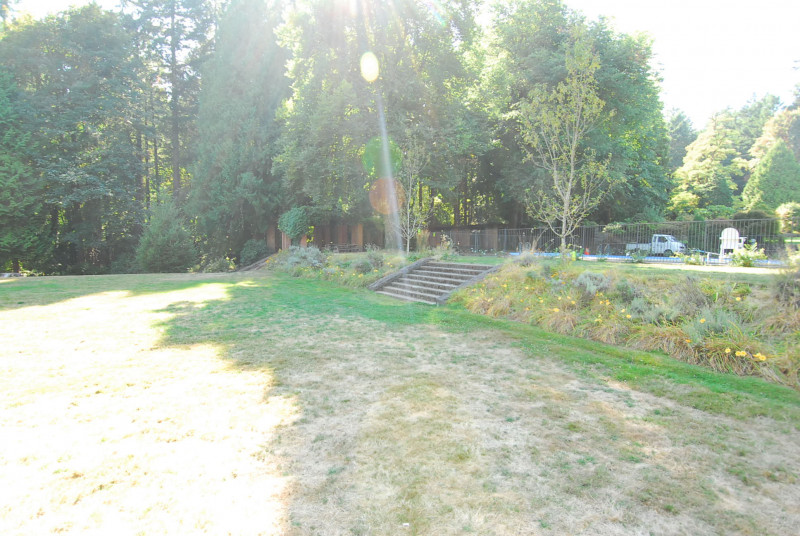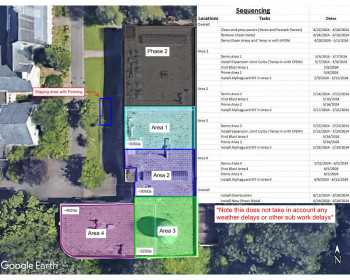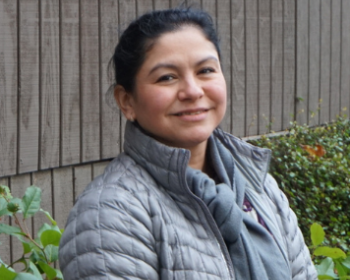Reimagining the Lower Estate Gardens - Request for Concept Designs
A Community Invitation
We invite the current Lewis & Clark community of students, staff, and faculty to submit concept designs to reimagine and honor the lower Estate Gardens area of the campus now through November 20, 2023.
- For more information about the lower Estate Gardens concept design process, there will be an Open House hosted on the Manor House patio (weather permitting) to answer questions for employees/students interested in submitting a proposal on October 5, 2023 at 4:00pm.
The lower Estate Gardens have long been an area of natural beauty and social connection for the LC community. Going forward, Lewis & Clark leadership would like to thoughtfully reimagine the area in ways that recognize its historical nature, focus on sustainability and simplicity, and honor the meaning of its place for so many.
Concepts may want to consider the following:
- Acknowledge the historic and contemporary significance of local Indigenous communities
- Take into consideration the integrity and aesthetics of structures cited in the national historic registry
- Sustainability and repurposing of existing materials, for example, existing ground brickwork, curved swimming pool ladders, or eco-friendly gardens
- Design of new spaces that evokes the current layout while innovating fresh ideas
- Hardscaping, landscaping, recreational, and socializing ideas will all be considered
- Serving diverse groups of the campus community in multiple ways to meet current and future needs
- Attention to cost efficiency and conscientious budgetary impact
Concept designs should include:
- A title
- Individual or Team members names, phone numbers, email addresses, and current relationship to the LC campus
- An artistic rendering of the concept design to visually convey layout. The artistic rendering is solely for visual understanding and is not critiqued on artistic grounds. In other words, don’t stress about artistic skills!
- A written description that addresses the considerations named above (200-400 words)
- General budget considerations: please include a list of items that will likely incur new costs and/or ongoing operational costs. A detailed budget estimate is not necessary
- Concept designs may come from individuals or teams made up of current students and/or staff and/or faculty members
- The Lewis & Clark Executive Council and Facilities Representatives will consider designs based on considerations 1-7 above, feasibility, creativity, and durability.
- Concept designs can be submitted by email to estategarden@lclark.edu until Monday, November 20, 2023 at noon
- The selected concept design/s will be announced in Spring 2024
- We expect planning and implementation of the design will begin in Summer 2024 and continue through Summer 2025
The area under consideration includes the area encompassing the outdoor swimming pool and grape arbor structures throughout and to the south. It is bordered by the pool house to the north and by retaining walls and Great Plat Field to the west. The area includes stairs leading to a large grassy area to the East bounded by tennis courts to the north. The pool house, lower rose garden and tennis courts are not in scope for the current project.
This area also includes the site of last year’s tragic accident, which remains a source of great sorrow for the campus community. We know there is interest in developing a permanent observance of the accident site. We respectfully request that observance of the accident site not be included in concept designs. Any future recognition would be discussed and considered outside of this process.
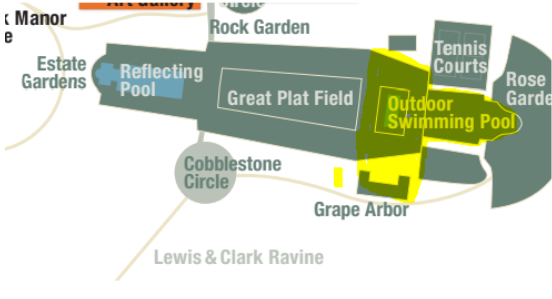
Modern History
In 1942, through a gift-sale made possible by the generosity of the Lloyd Frank family, Lewis & Clark College Trustees acquired a tract of 63 acres in Portland’s southwest hills. The deeply forested landscape was home to Fir Acres, a grand estate developed in the 1920s by Lloyd Frank and designed by Herman Brookman. The Lewis & Clark College campus has grown from this original estate, expanding to include academic and residential buildings throughout the original property and encompassing the Law Campus, just west of the undergraduate campus and the Graduate School campus to the south. Sections of the property were entered to the National Register of Historic Places in 1979. The description of the Estate Gardens figures prominently in the nomination.
Here is an excerpt:
“The majority of the estate’s landscaped grounds are visible from the back terrace of the Manor House, looking east toward Mt. Hood. Going in order east from the house is a large grass and tree area with rough cut stone steps leading down to a multicolored flagstone landing. All steps and walls on the grounds are of rough cut stone. More steps lead down on either side of a carved stone lion fountain covered by a wooden pergola. A few feet below is another fountain having three ornamental fish as the main feature, with a terraced waterfall flowing into the large reflection pool in which Mt. Hood can be seen on a clear day. On either side of the pool are ivy-covered stone walls.
On either side of the lower end of the reflection pool are two gazebos. They are partially built into the stone retaining wall which separates the upper portion of the grounds from the road which passes below and the lower grounds. air structures have short stone walls and flagstone floors. These square, open The tile-shingled, hip roof is supported at the four corners by stained oak columns.
From the road below the gazebos, are steps leading on either side of a reptilian head fountain onto a long grass area bordered by stone walls and shrubs. Steps lead off on both sides to a garden area to the south and a rock garden and grass area to the north. The far side of the north grass area is bound by what is left of the Conservatory which was destroyed in the Columbus Day storm in 1962. The most impressive feature left from the Conservatory is the brass ‘Monkey Gate,’ designed by Oscar Bach and built at a cost of $3,000.
Farther on down the grounds are more steps which lead to the swimming pool area. The pool lies lengthwise across the area with grape-covered arbors at both ends made of bricks surmounted by wood beams.
The bath house, just north of the pool, is a stucco structure with the exception of brick quoins and arches around and over the windows and doors. The gabled roof is covered with handmade tile shingles. Topping the roof is a wooden cupola with a wrought iron weathervane.
Below the bath house are two tennis courts which were for lawn tennis but are now hard-surfaced.
Continuing east from the pool area are some more steps to another large grass plaza with a flagpole. It is bound by a stone wall which overlooks the rose garden several feet below and is made up of many geometrically-shaped rosebeds and several grass areas. At one time the gardens held 17,000 roses and produced grand prize Rose Festival roses in 1929 and 1930.
Throughout the years that the estate has been owned by Lewis & Clark College a conscientious effort has been made to preserve the original integrity and beauty of the structures. President John R. Howard has been instrumental in this process as he has insisted that the alterations of the buildings, especially Odell Manor, be only temporary. Thus, though the estate has been transformed into a college, the original elegance remains.”
Views of the Site
- Outdoor Pool with the poolhouse to the north, historical view
- Outdoor Pool with the poolhouse to the north, modern view (note the original pool ladder handles have been maintained)
- Lower estate garden grass field with tennis court to the north (note the flagpole is not currently present)
- Lower estate garden grass field with view west to the pool
Land Acknowledgement
Lewis & Clark College purposefully reflects on the history of the land it occupies. Prior to the newcomers arriving in this area, the indigenous land of what would later be called Multnomah County was home to many tribal people. We honor the indigenous people on whose traditional and ancestral homelands we stand: the Multnomah, Kathlamet, Clackamas, Tumwater, and Watalala bands of the Chinook; the Tualatin Kalapuya; and many other indigenous nations of the Columbia River.
It is important to acknowledge the ancestors of this place and recognize that we are here because of the sacrifices forced upon them. In remembering these communities, we honor their legacy, their lives, and their descendants.
This Land Acknowledgement was developed in consultation with Indigenous individuals from the Indigenous Nations Study Program at Portland State University and adopted in 2018 with their permission.
More Facilities Stories
Facilities Services is located in Facilities Services on the Undergraduate Campus.
MSC: 76
email facility@lclark.edu
voice 503-768-7845
fax 503-768-7023
Associate Vice President of Facilities Services David Ernevad
Facilities Services
Lewis & Clark
615 S. Palatine Hill Road MSC 76
Portland OR 97219
